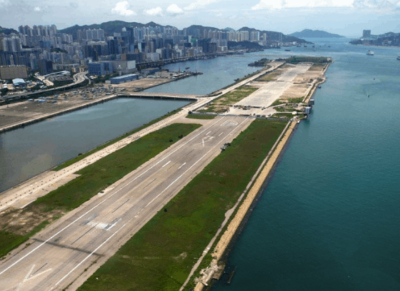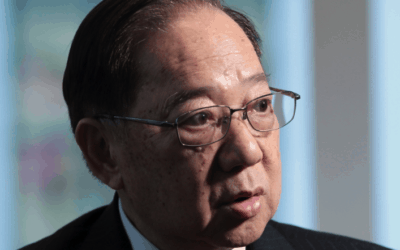
The latest site on the former Kai Tak runway fetched HK$9.89b
Hong Kong’s Lands Department on Wednesday announced that a consortium of three Hong Kong developers, together with the mainland’s China Overseas Land & Investment had won the largest residential site on what had been the runway of the city’s former Kai Tak Airport for HK$9.89 billion ($1.26 billion).
Infinite Sun Limited, a consortium comprised of Wheelock Properties, Henderson Land Development, China Overseas Land & Investment Ltd and New World Development, was awarded the 103,150 square foot (9,583 square metre) residential plot on the former Kai Tak runway at a price equivalent to HK$13,701 per square foot of finished housing, according to an official statement.
The winning bid came in at the low end of expectations as developers adopt a cautious market outlook, with an account in the South China Morning Post citing Wheelock Properties chairman Stewart Leung as saying that the consortium expects to invest a total of HK$16 billion in the development. Completed flats in the project are predicted to sell for HK$22,500 to HK$25,000 per square foot.
Kai Tak’s Biggest Plot Sells on the Cheap
The consortium’s winning bid for the Kai Tak Area 4B Site 1 ranked as the second-lowest among the purely residential plots auctioned on the former airport runway. Market expectations were for the site to fetch from HK$9.4 billion to HK$10.8 billion, or HK$13,000 to HK$15,000 per square foot.
The 103,150 square foot (9,583 square metre) site, which is located in the inner area of the former runway facing the Kowloon Bay commercial area, can yield up to 722,060 square feet of housing by gross floor area, according to planning rules for the site.
Three of the four developers in this week’s consortium had teamed up in November last year to win an earlier residential plot on the Kai Tak runway with Henderson Land, New World Development and Wheelock & Company joining with Empire Group, a developer formerly run by the late Walter Kwok, jointly purchasing that 104,475 square foot site for HK$8.33 billion.
Developers Haven’t Heard the Recovery News
“Developers remain prudent and they’re waiting for further information announced by the Hong Kong government about the proposed vacancy tax,” Thomas Lam, executive director of Valuation & Advisory at Knight Frank told Mingtiandi.

Stewart Leung led Wheelock’s effort in the consortium bid for the Kai Tak site
The vacancy tax scheme is scheduled for discussion at the Legislative Council’s housing panel this coming Monday and targets all newly completed flats left empty for 12 months from the date occupation permits were issued. The proposed tax would be equivalent to two years of rental income, calculated by government specialists and based on market rates.
The developer caution this week appears to defy some recent signs of revival in Hong Kong’s property market. The city’s home prices edged up 0.08 percent in January and rose by another 2.8 percent between February and March 17, according to the Centa-City Leading Index, which is compiled by Centaline Property Agency.
The rise in housing prices followed a months long decline starting last July with average home prices dropping by 9.2 percent between July and December.
Kai Tak Remains Development Hub
This week’s sale was the latest in a series of housing site tenders in Kai Tak, which has been a hub of redevelopment for the city. Three residential plots on the former runway have sold in the last four months, although this sale was the first after the lunar new year holiday, with housing sales having quickened over the last month.
In January, Hong Kong’s development giant Sun Hung Kai Properties was awarded a 10,956 square meter (117,900 square feet) parcel in Kai Tak for HK$11.26 billion ($1.43 billion), or around HK$17,360 per square foot of housing.
In December, SHK’s mainland competitor, China Overseas Land & Investment (COLI) had paid the equivalent of HK$13,523 per square foot for a nearby site, however, a planned sale of a 9,480 square metre commercial site in Kai Tak was cancelled in late January when no developers were willing to pay the auction’s reserve price.
Leave a Reply